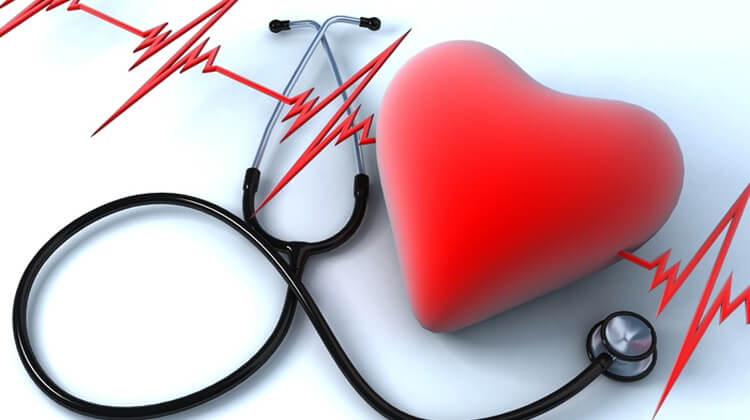February is American Heart Month, which is a great opportunity to inspire heart-healthy lifestyles, as well as to increase awareness of signs of heart attack, cardiac arrest, and stroke. It is important to be aware of these symptoms so that you medical attention can be given to you, or someone around you, as soon as possible. Call 911 IMMEDIATELY if you suspect a heart attack or cardiac arrest is occurring. We are providing a three part series for Heart Health during the month of February.
PART 1 of the Heart Month Series is Heart Attack vs Cardiac Arrest.
Information on heart attacks and cardiac arrest may likely familiar to you. In Part 1 of our series, we explore the differences and similarities of the two.
Heart Attack vs Cardiac Arrest – Cardiac Arrests are NOT the same as Heart Attacks.
Heart attacks are caused by a blockage that stops blood flow to the heart. A heart attack (or myocardial infarction) refers to death of heart muscle tissue due to the loss of blood supply. Over time, a coronary artery can narrow from the buildup of various substances, including cholesterol (atherosclerosis). This condition, known as coronary artery disease, causes most heart attacks. Heart attack can be understood as a “circulation” problem. A heart attack is quite serious, sometimes fatal.
Cardiac Arrest, by contrast, is caused when the heart’s electrical system malfunctions. The heart stops beating properly. Hence the name: The heart’s pumping function is “arrested,” or stopped.
Heart Attacks
Every 34 seconds, someone dies from heart and blood vessel diseases, America’s No. 1 killer. Since most of those deaths are from coronary heart disease — over 375,000 each year — it’s important to learn all you can about heart attack. Some heart attacks are sudden and intense. But most start slowly, with mild pain or discomfort.
Symptoms of Heart Attack:
Most common for both Men and Women
- Uncomfortable pressure, squeezing, fullness or pain in the center of your chest that lasts more than a few minutes, or goes away and comes back
- Pain or discomfort in one or both arms, upper back, neck, jaw or stomach
- Shortness of breath, with or without chest discomfort
Symptoms of Heart Attack that affect Women > Men
- Unusual fatigue
- Nausea/Vomiting
If you or someone you’re with has chest discomfort, especially with one or more of the other signs, immediately call 9-1-1 or the emergency medical services (EMS) in your area (fire department or ambulance). Get to a hospital right away.
Cardiac Arrests
Cardiac arrest is the abrupt loss of heart function in a person who may or may not have been diagnosed with heart disease. It occurs suddenly and often without warning. This is triggered by an electrical malfunction in the heart that causes an irregular heartbeat (arrhythmia). With its pumping action disrupted, the heart cannot pump blood to the brain, lungs and other organs. Seconds later, a person loses consciousness and has no pulse. Death can result quickly if proper steps aren’t taken immediately. Cardiac arrest may be reversed if CPR (cardiopulmonary resuscitation) is performed and a defibrillator is used to shock the heart and restore a normal heart rhythm within a few minutes.
Symptoms of Cardiac Arrest
- Sudden loss of responsiveness: The person doesn’t respond, even if you tap him or her hard on the shoulders, or ask loudly if he or she is OK. The person doesn’t move, speak, blink or otherwise react.
- No normal breathing:The person isn’t breathing or is only gasping for air.
If you have tried and failed to get the person to respond, and you think the person may be suffering cardiac arrest, here’s what to do:
- Yell for help! Tell someone nearby to call 911 or your emergency response number. Ask that person or another bystander to bring you an AED (automated external defibrillator), if there’s one on hand. Tell them to hurry – time is of the essence.
- If you’re alone with an adult who has these signs of cardiac arrest, call 911 and get an AED (if one is available).
- Check breathing: If the person isn’t breathing or is only gasping, administer CPR.
- Give CPR:
- Push hard and fast! Push down hard and fast in the center of the chest, perhaps to the beat of the Bee Gees’ disco hit “Stayin’ Alive”. This song has 100 beats per minute, the rate recommended by the American Heart Association for CPR chest compressions.
- Use an AED Use the automated external defibrillator as soon as it arrives. Turn it on and follow the prompts.
- Keep pushing Continue administering CPR until the person starts to breathe or move, or until someone with more advanced training takes over, such as an EMS team member.
If you have any questions regarding Heart Health or any other health topic, please stop by, or call, the National Life Health and Wellness Center.
Tel: 802.229.7515
Hours:
Monday/Wednesday 7:30-4
Tuesday/Thursday 8:30-4
Friday 8-11

